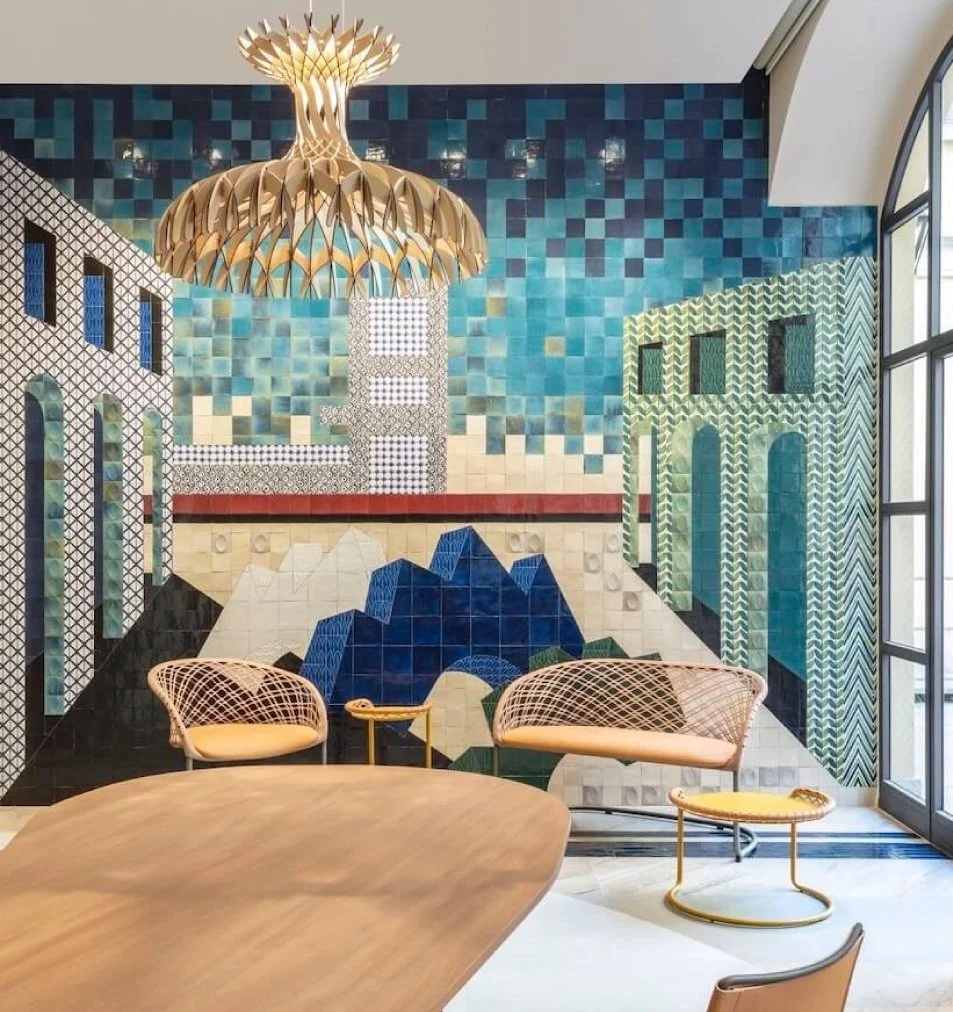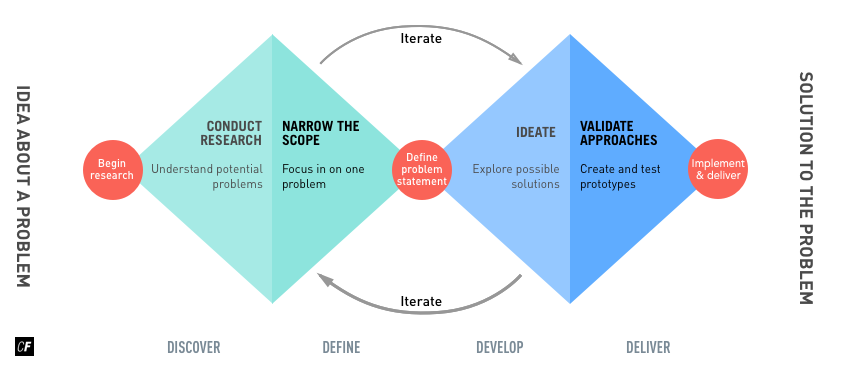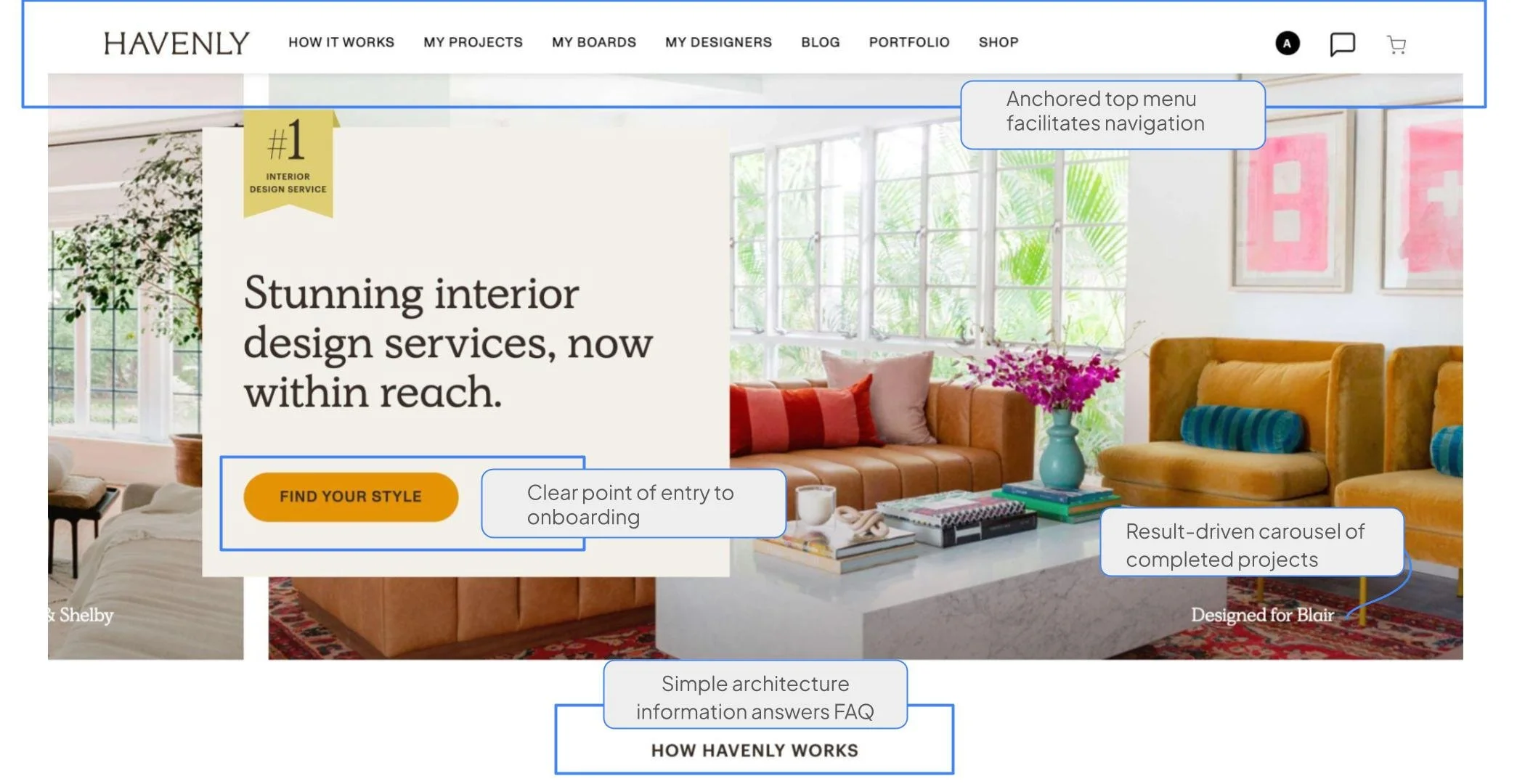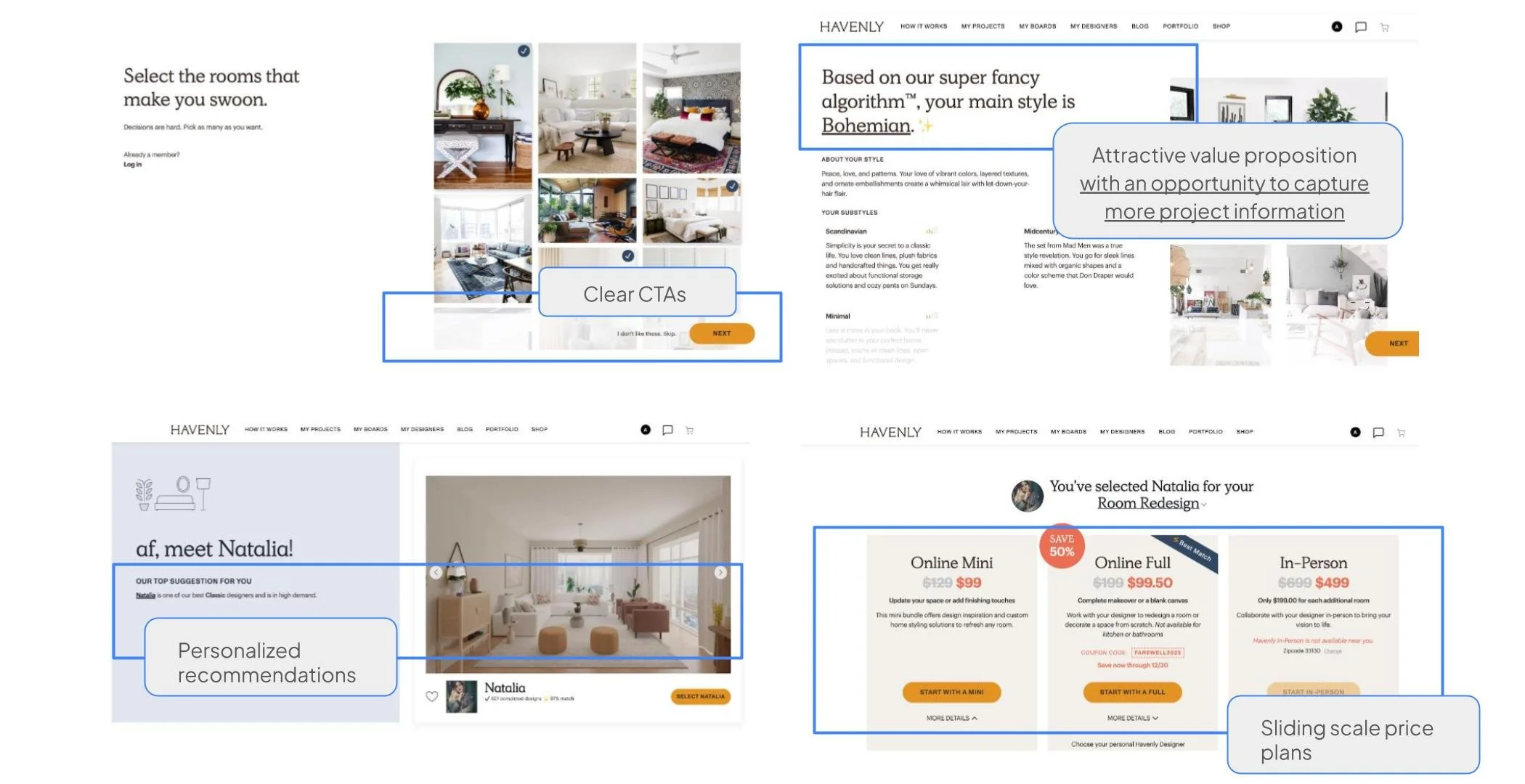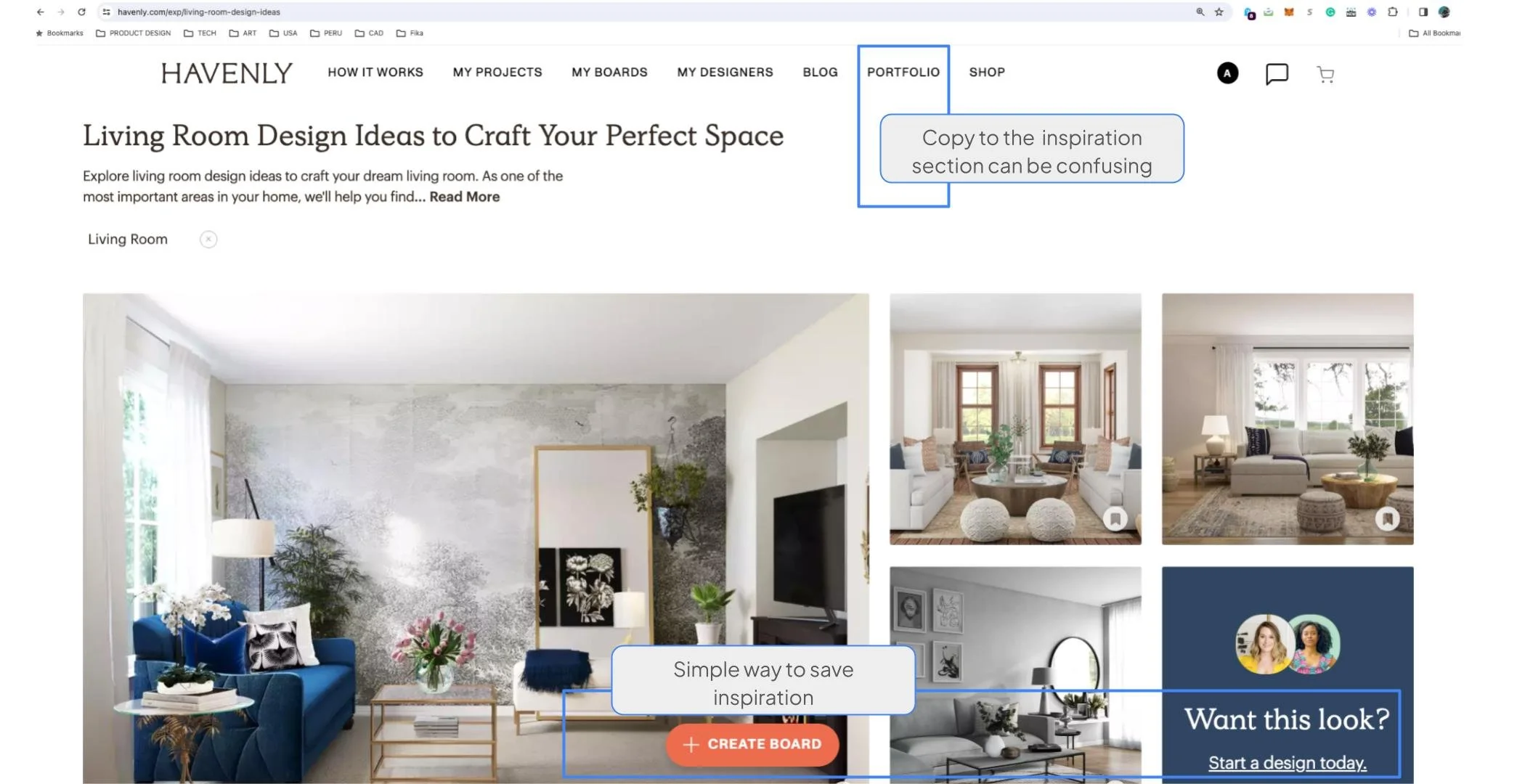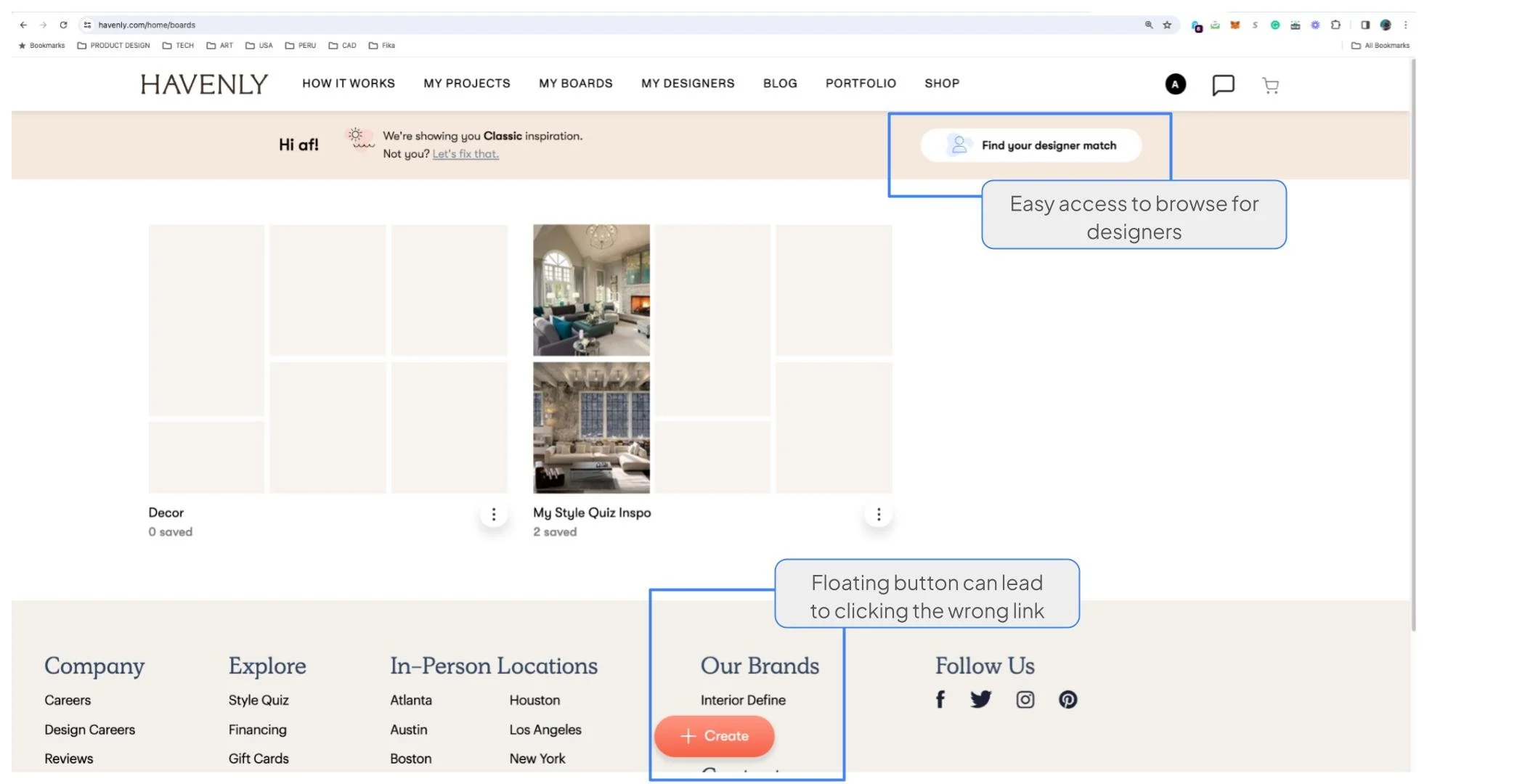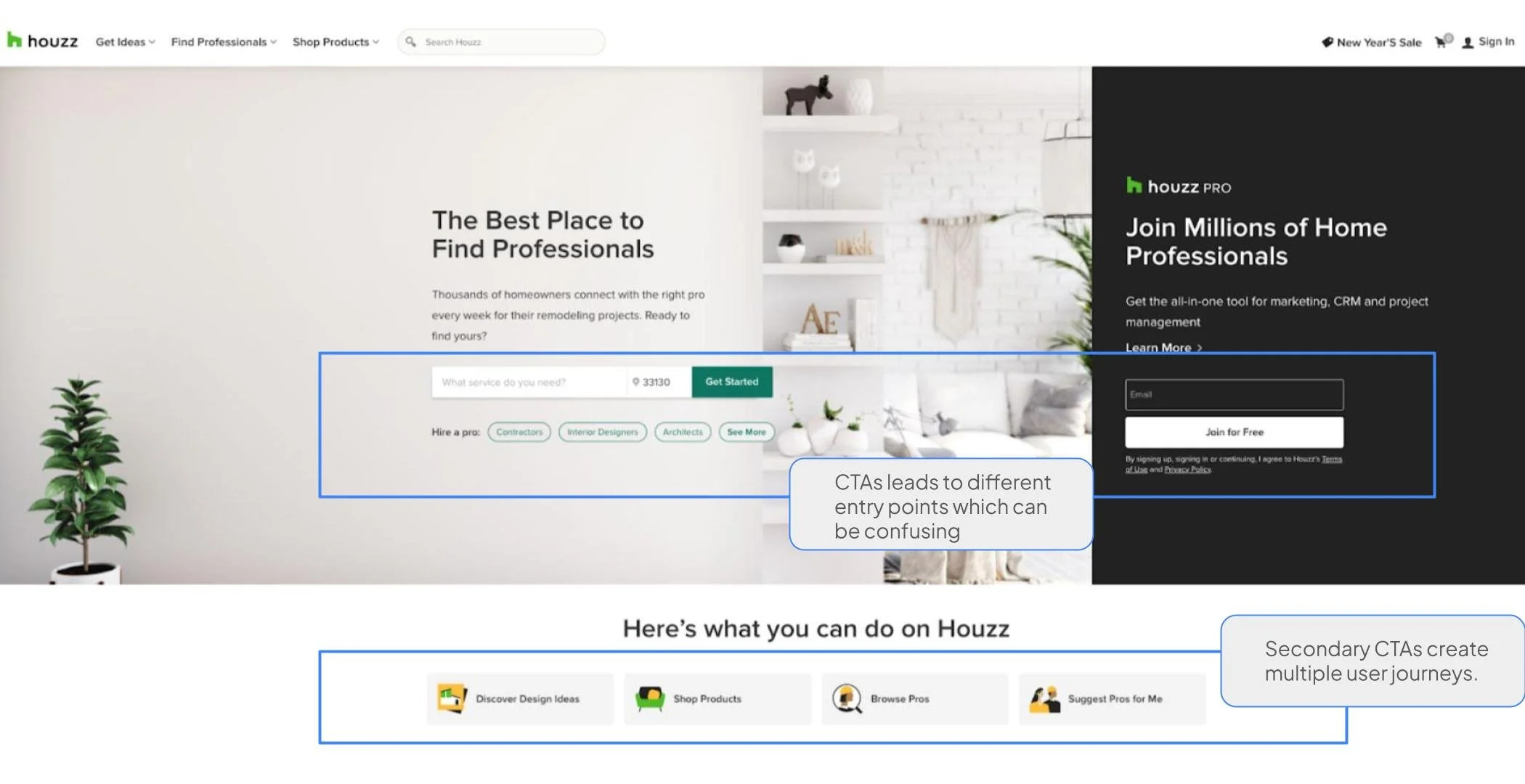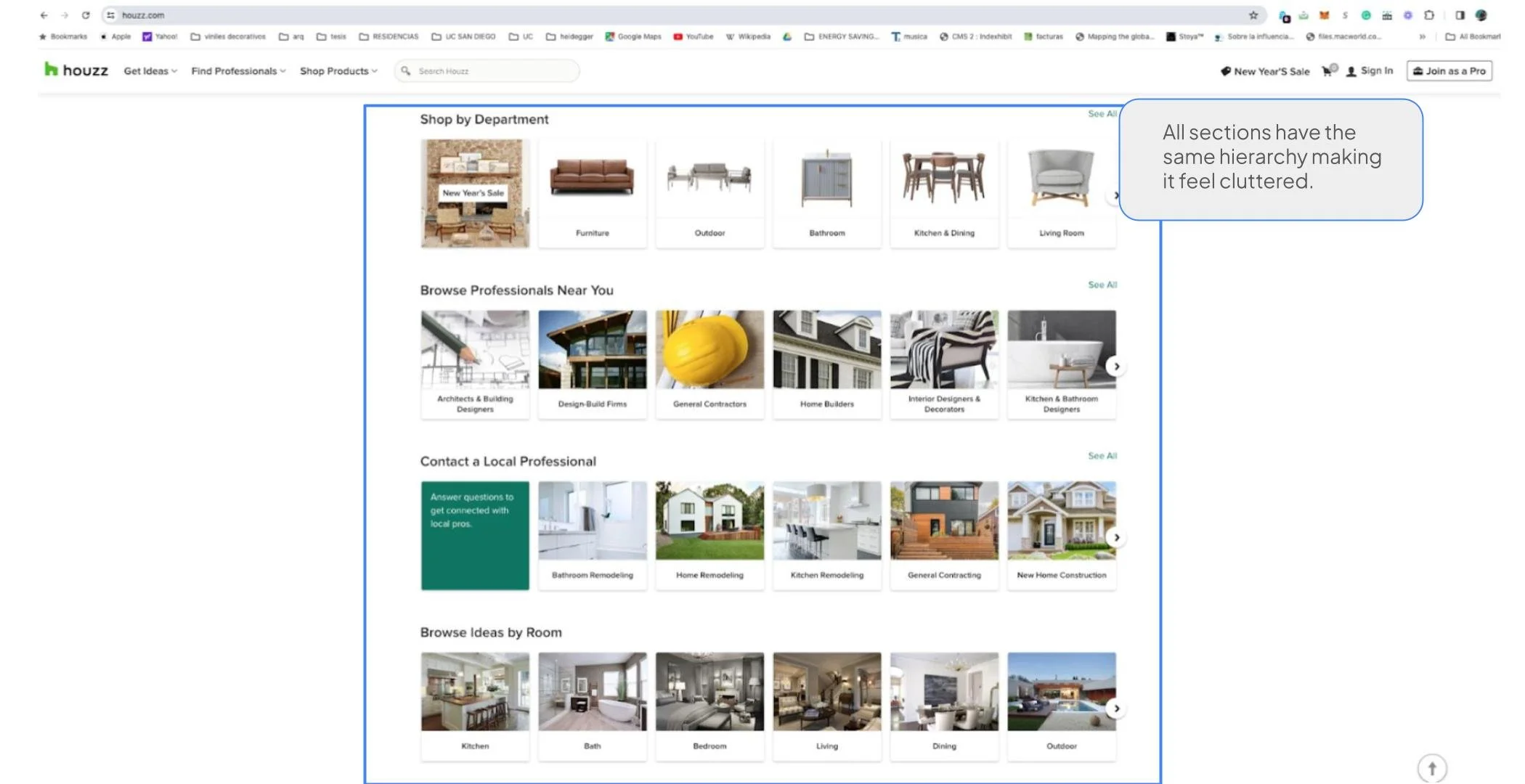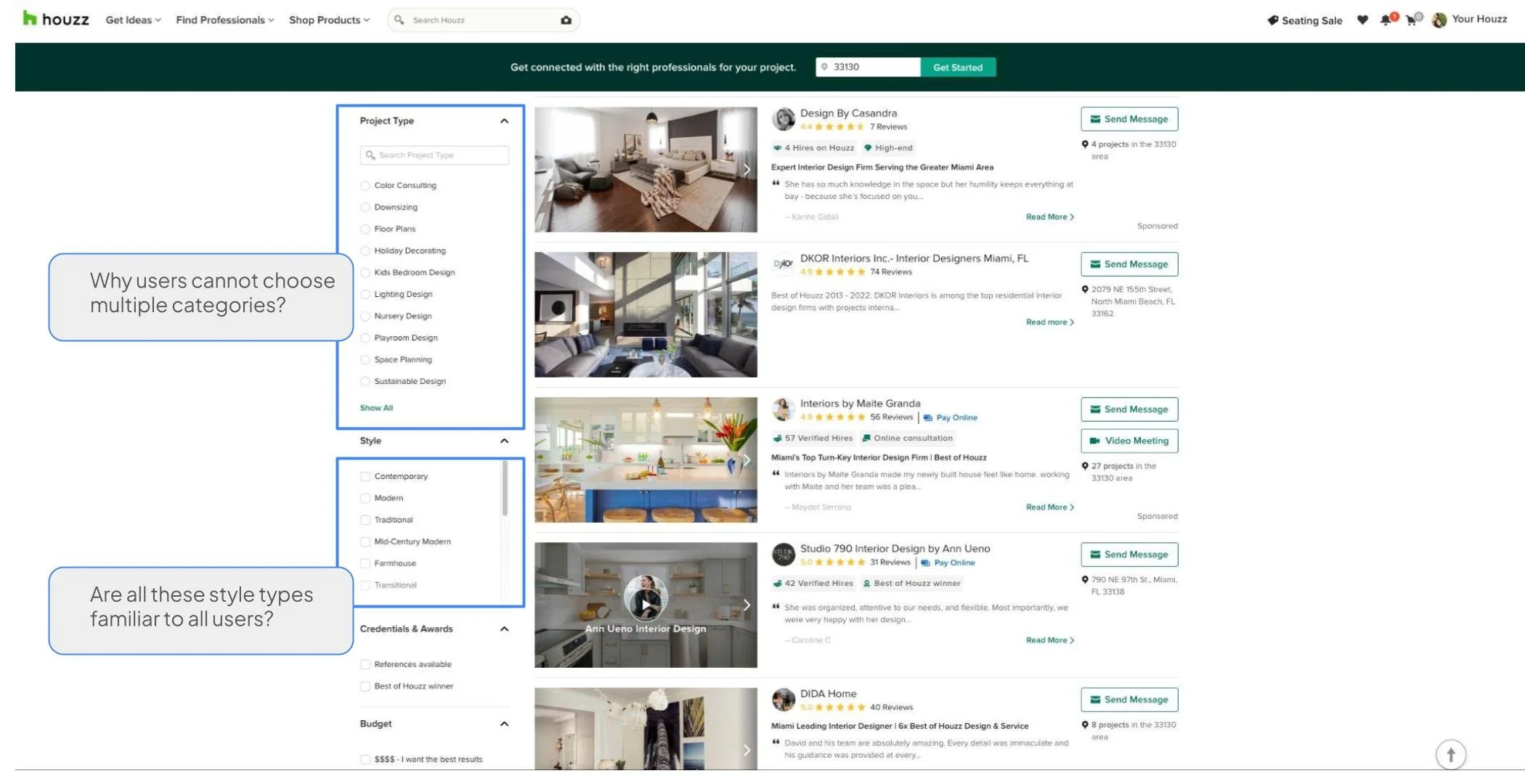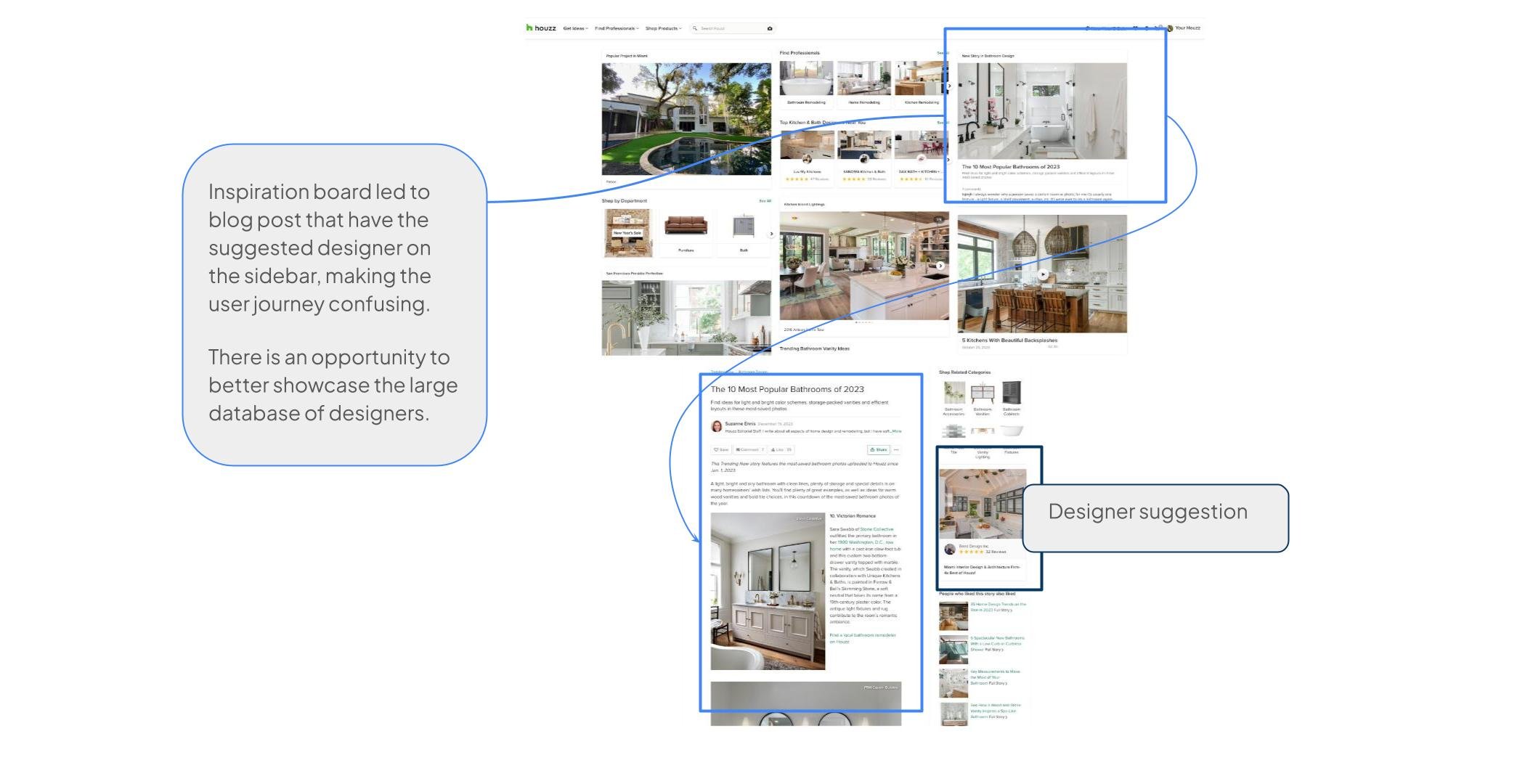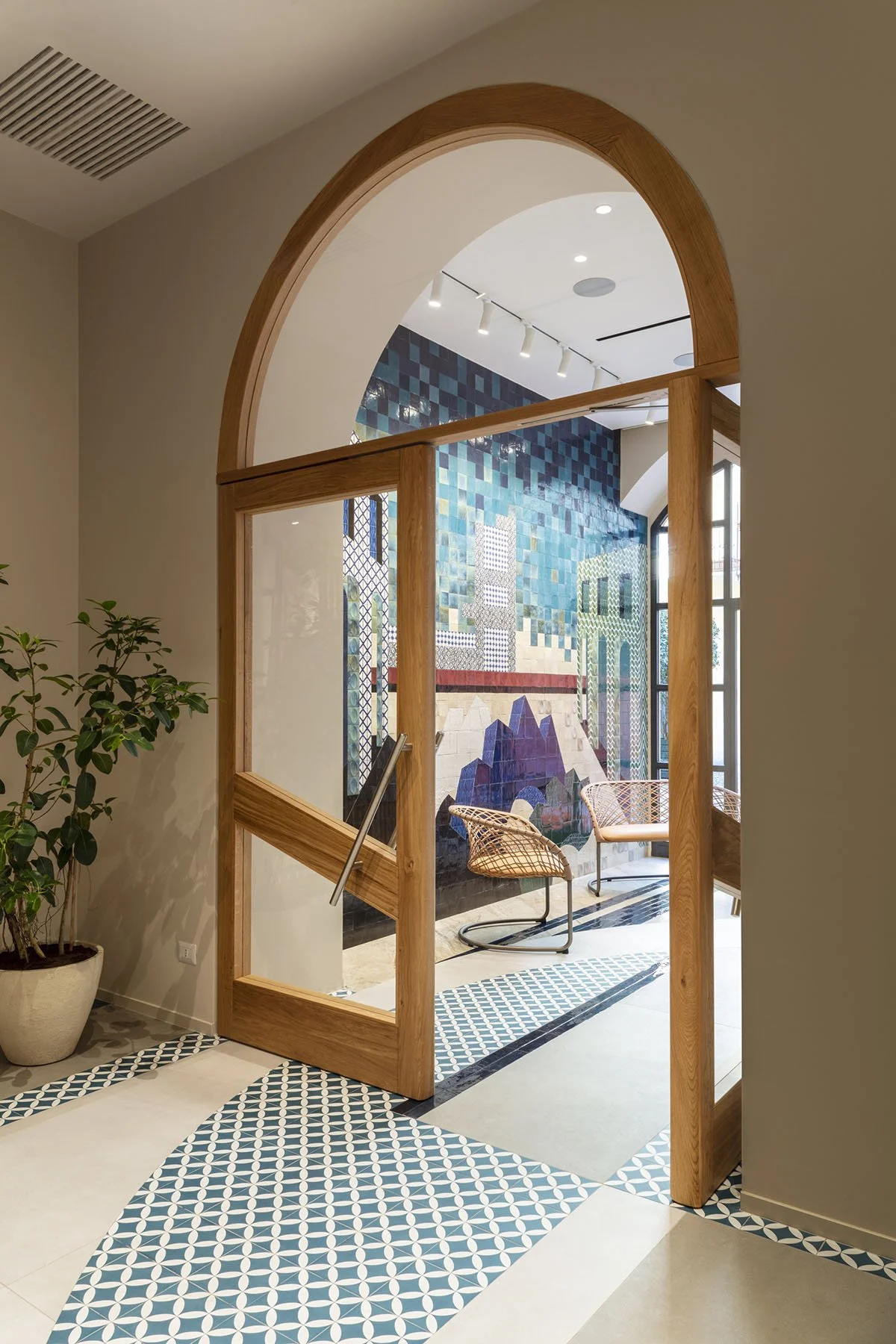Caracol
Business Development and Design Strategy
Overview
As a Product Designer for Caracol, my role was to leverage technological feasibility, business viability, and product desirability to identify unique opportunities in the home decor industry. I focused on creating a comprehensive Business Development Document, conducting a UX competitive analysis, and crafting user stories that underline Caracol's potential to provide users with an effective way to communicate with home decor professionals through personalized options.
Source: Career Foundry
List of possible problems
Users often need help envisioning how design ideas would actually look in their space.
They feel overwhelmed by the choices and unsure about what will look best.
Users struggle to communicate their personal style, spatial constraints, and budget effectively to professionals.
Although there are apps and services available, there is a need for a more intuitive, personalized solution.
Understanding the problem & the Double Diamond Strategy
How do you balance the goals of the end user with those of the business?
In the development of Caracol, the use of the Double-Diamond strategy was instrumental in ensuring a well-rounded problem statement. Particularly, the discovery phase, involving the analysis of user reviews and potential competitors, was helpful in gaining insights into the needs, preferences, and pain points of homeowners and renters, as well as the challenges faced by home decor professionals. Concurrently, the business development document allowed me to align users´ goals — like connecting with decor professionals through personalized options — with business objectives, such as establishing a market presence and ensuring growth and user engagement.
List of possible solutions
Develop an interactive quiz to help users communicate their design preferences to the professional expert.
Integrate a budget tool to help users define financial constraints effectively.
Provide suggestions for professionals based on preferences.
Ensure the app includes a chat, video call feature, and project collaboration space for communication between the user and the professional.
Implement a system where users can review professionals.
Provide a curated gallery of designs for inspiration that showcases the work of professionals using the app.
Problem Statement
Homeowners and renters need a simple way to connect with home decor professionals who understand their unique style and project needs. We will know this to be true when we see a large number of successful projects initiated through the app.
UX Competitor analysis
I conducted an analysis of two potential competitors. The first, Havenly (https://havenly.com), offers tailored interior design services and decor products, including a service that matches users with professional designers according to individual styles. The second, Houzz (https://www.houzz.com/), serves as a comprehensive platform for home renovation and design, offering a vast database of design ideas, an engaged online community, and robust design software.
Havenly: interface overview
Havenly: UX analysis
Usability
Layout
Navigation
Compatibility
Diferentiation
Call to Action
Havenly's overall user experience is intuitive and easy to use.
Users can quickly move through a series of simple questions, determine their personal style, match with a designer, and purchase a plan.
The home page has a clear information architecture, answering common questions users might have about their service.
CTAs are clear and easily take the user through a form to determine their personal preferences.
There is an opportunity for a more differentiating layout that might improve branding.
Navigation is simple and primarily focused on an anchored top bar menu.
Havenly supports Chrome, Safari, and Firefox.
Client projects are featured in a carousel on the homepage to highlight quality results and a result-driven approach.
Homepage communicates value and affordability, bolstered by endorsements from satisfied customers and reputable companies.
From the start, the users are prompted to complete the quiz to get started. During this process, emails are collected, accounts are created, and users are automatically logged in. So, after this is completed, users are free to browse the Havenly site without any onsite notifications.
Houzz: interface overview
Houzz: UX analysis
Usability
Layout
Navigation
Compatibility
Diferentiation
Call to Action
There is a lot of information at once, which can feel confusing and overwhelming.
Multiple CTAs create doubts as to what to do first.
The layout is optimized for mobile, there is an opportunity to make it responsive across devices.
Overall it feels a little cluttered, with multiple inner sections making it hard to reach the user goal of finding a professional.
There is a menu bar to access the main sections and a search bar to help users find entries.
Home Ideas has a footer with sections such as careers or sell, which feels disconnected from the user goal.
Houzz currently supports iPhone, iPad, and Android.
A large database of professionals in the interior design industry provides a lot of options to choose from.
There is an opportunity to help users narrow down their search to better match them with the right professionals. Despite the vast array of filters, it is hard to narrow the search to specific project scopes.
Image boards direct users to blog content that might not be relevant to their needs; a gamified feature or a way to draft your space using Houzz AR tech might be really helpful in helping users zoom in on their project.
Users can navigate freely in the app but are bombarded with direct mail after signing up, which can make the experience feel tiring.
Key takeaways
Challenges For Users Seeking Professionals:
Find a simple way to provide relevant information on their project so they can easily find a professional to help them achieve the results.
Avoid irrelevant matches and results with too many options and filters.
Not all users require full-scale projects. They want to find other alternatives.
Competitor Analysis Insights
Challenges For Professionals Seeking Clients:
Designers find it hard to manage client expectations when users do not provide all the needed information.
Inconsistent lead quality and conversion rates affect perceived service value.
Professionals need to accurately represent the scope of their services to attract the right type of projects.
Challenges For Platform Administrators:
Finding a balance between making the platform easy and attractive to start projects while also gathering enough information to set realistic project scopes.
Improving how professionals are discovered, ensuring relevant, high-quality matches.
Develop and manage service plans to cater to a wide array of users at different price points.
Understanding the research
How do you know if you're asking the right research questions for a project?
The best research questions are those that lead to actionable insights and are tied to business outcomes. They should be clear and specific to provide insights towards the project's objectives effectively. In the case of Caracol, we should consider how the research questions touches upon:
What makes a successful match between users and professionals?
What do users consider when looking for personalized home decor solutions?
What do professionals need to better manage their project scopes?
What factors drive user and professional satisfaction and long-term platform engagement?
Research Question
How can we effectively match homeowners and renters seeking personalized home decor solutions with relevant professionals, ensuring satisfaction and engagement for both parties?
Feature Requirements & User Stories
Interactive Onboarding Flow
As a homeowner, I want to go through an interactive onboarding process so that the platform can understand my style preferences and decor goals for a more personalized experience.
Expert Browsing and Communication
As a DIY Renovator, I want to browse through expert profiles and communicate directly with them so that I can get specific advice and tips for my home projects.
Inspiration Gallery
As a homeowner, I want access to a relevant inspiration gallery filled with various design ideas and professional portfolios to find inspiration and connect with a professional whose style resonates with my vision.
Login / Sign up Flow
As a Renter, I want the option to browse designs and professionals without having to sign up or log in first so that I can explore home decor options freely and decide if I want to engage further with the platform.
Navigation Menu
As a Contractor/Tradesperson, I want an intuitive navigation menu, so that I can quickly find new project opportunities, manage ongoing jobs, and update my profile and portfolio.
User Reviews and Raitings
As a user, I want to read and write reviews and ratings for experts so that I can make informed decisions and share my experiences with the community.
Personalized User Dashboard
As a Design Professional, I want a personalized dashboard so that I can easily manage my client projects, access inquiries, and view insights relevant to my expertise.
Secure Payment Gateway
As a Home owner-renter, I want a secure payment system so that I can efficiently process transactions for my services and ensure timely compensation.
Community Engagement Tools
As a Contractor/Tradesperson, I want to participate in forums and discussion boards so that I can learn from the community, share my own ideas, and gradually build my professional network.
Final thoughts
For this project, I employed a combination of competitive analysis and user stories as my primary research methods. The competitive analysis helped me understand the market landscape and identify service gaps. User stories helped me better understand actionable insights. This approach helped me balance some challenges, but it feels incomplete without other research like user interviews, user personas, and usability tests, which I think are also needed to provide a more robust foundation for the project.
In my experience, the most challenging aspects of research are data collection and participant recruitment. Gathering in-depth, high-quality, relevant data to understand the distinct preferences, needs, and interactions of all relevant user groups can be time-consuming and difficult to access. Concurrently, recruiting participants who accurately represent the target audience can be difficult, particularly without a compensation budget.
What's the most challenging part of the research?
What methods were used when starting this project?
